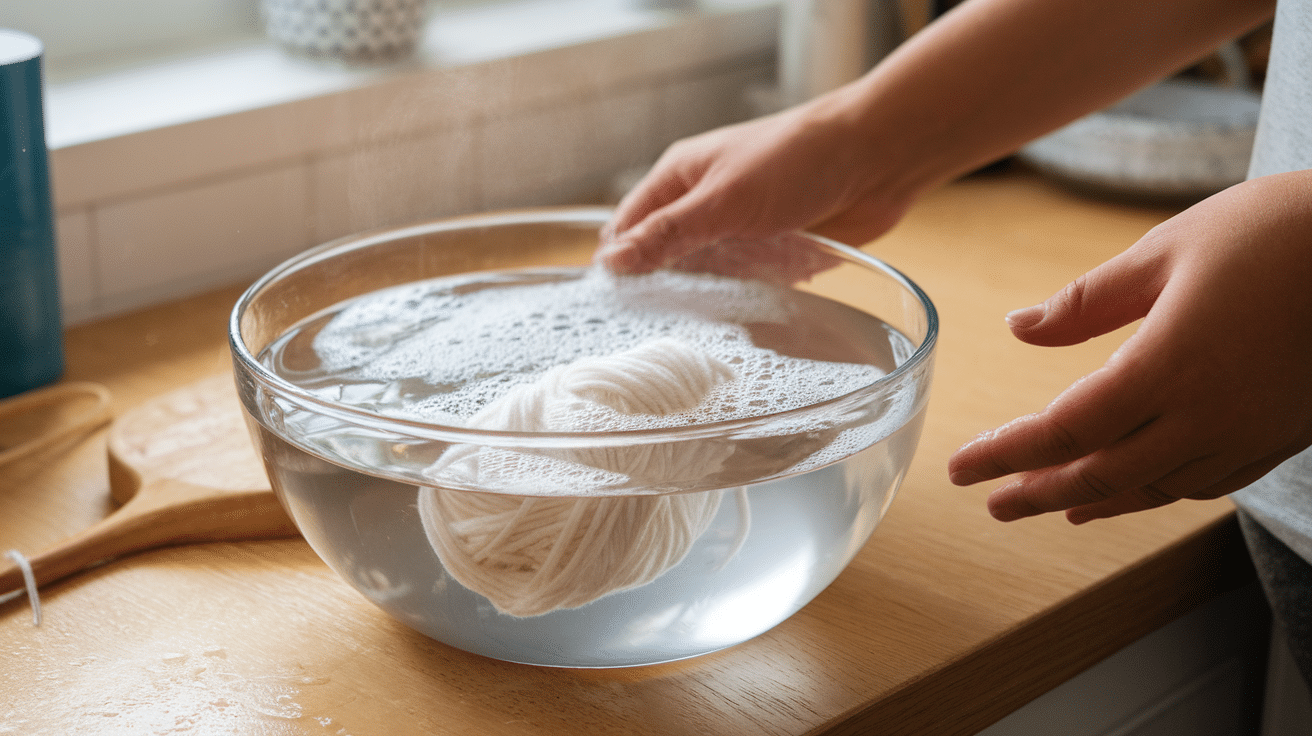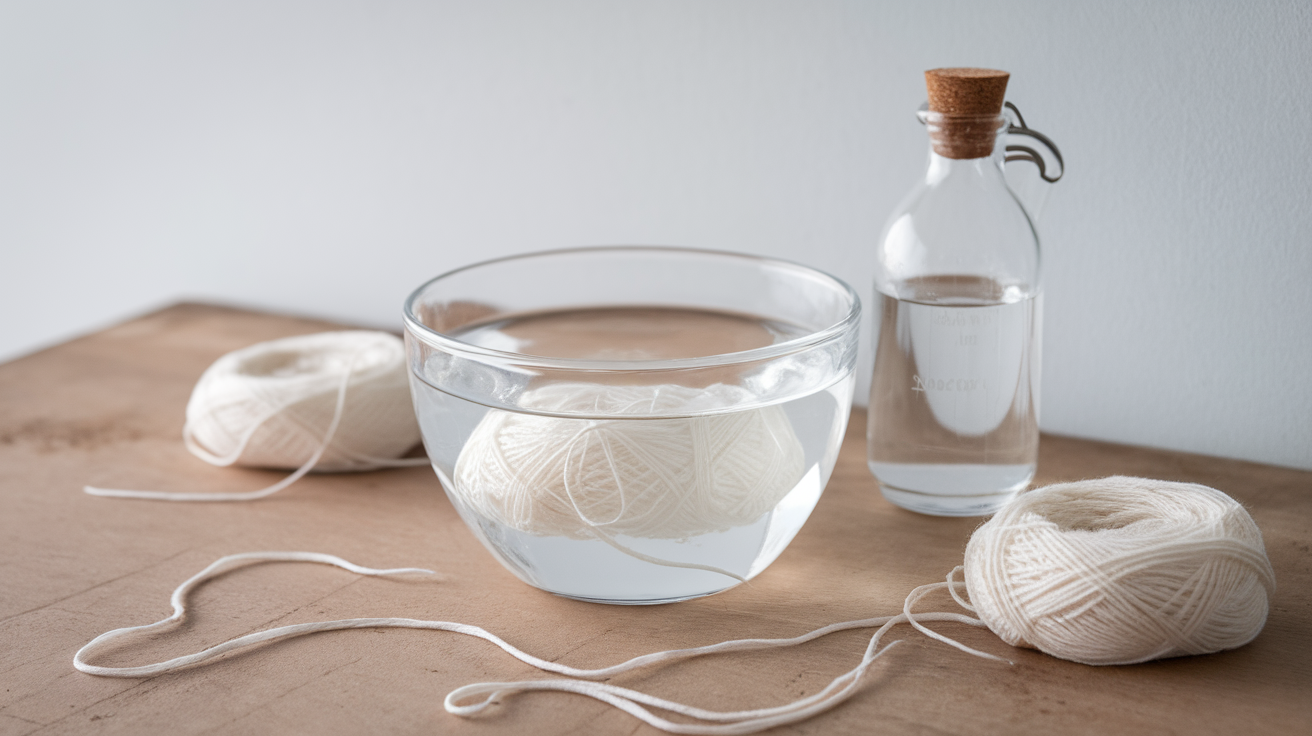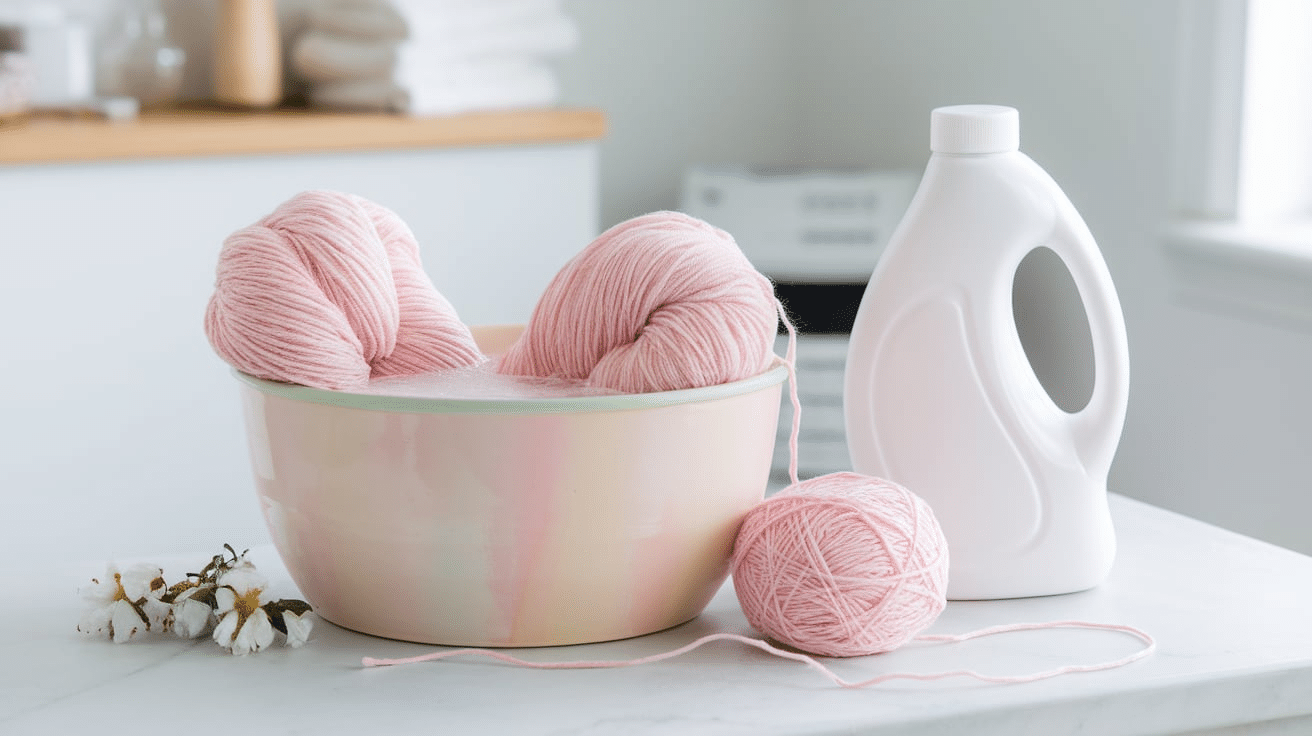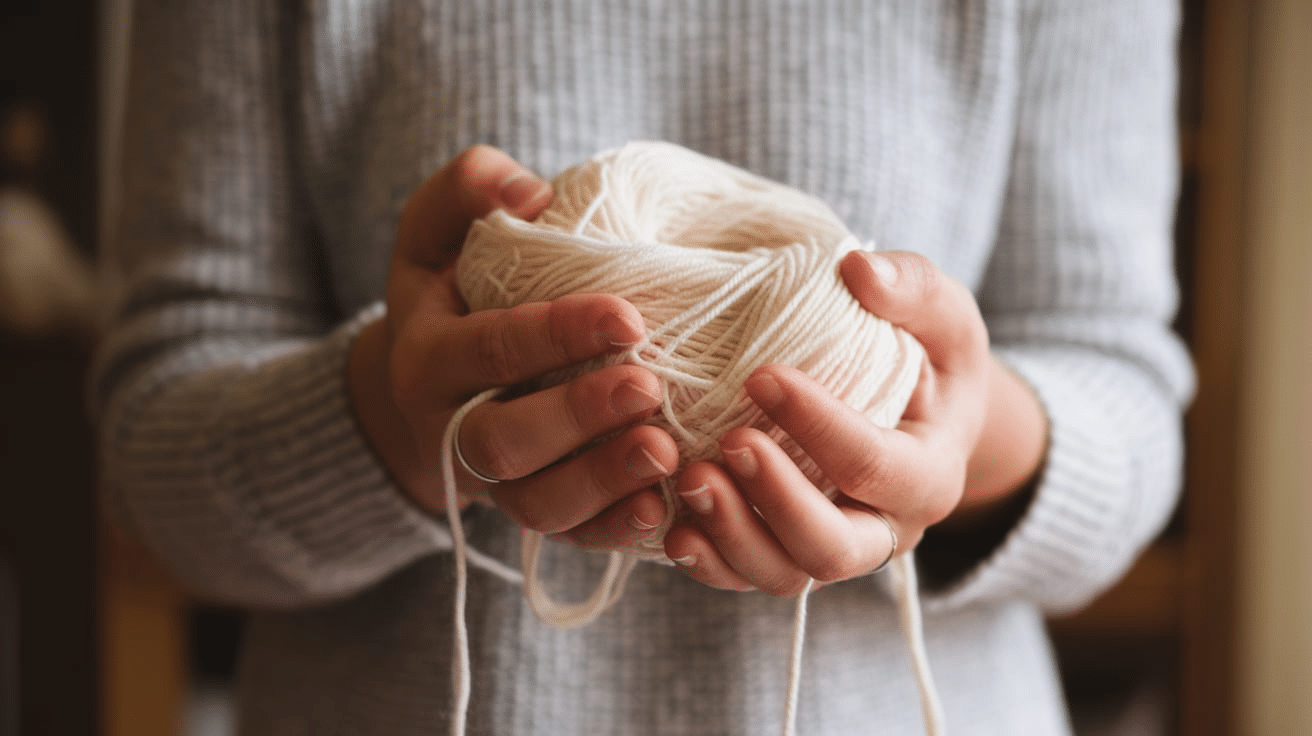Cotton yarn is great for lots of projects, but sometimes it feels stiff or rough when you first buy it. If you’ve ever worked with cotton yarn that just doesn’t feel soft in your hands, you’re not alone.
The good news is there are some easy ways to fix that! Softening your yarn can make it easier to knit or crochet, and it makes your finished items feel much nicer to wear or use. Whether you’re making dishcloths, blankets, or clothes, soft yarn can make a big difference.
In this blog, we’ll go over simple methods you can try at home to soften your cotton yarn. No special tools or skills are needed—just a few items you probably already have. Let’s get started and turn that stiff yarn into something soft and cozy you’ll love to work with!
Why Is Cotton Yarn Sometimes Stiff?
Cotton yarn can feel stiff for a few different reasons. First, cotton is a natural fiber, and it doesn’t stretch much like wool or acrylic.
That means it can feel tighter and rougher when you touch it. Also, during the manufacturing process, companies sometimes add chemicals or coatings to help the yarn look neat and clean in the store. These treatments can make the yarn feel even stiffer.
Another reason is that cotton yarn is tightly spun, which means the fibers are packed closely together. This can make the yarn feel firm, especially when it’s new. But don’t worry—this doesn’t mean it’s bad yarn!
With just a little care, you can soften it up and make it feel a lot nicer. In the next sections, we’ll show you some easy ways to do just that.
Methods to Soften Cotton Yarn
There are a few easy ways to soften cotton yarn, and most of them use things you already have at home. These methods help the yarn feel smoother and easier to work with. You can try one method or mix a few to see what works best for your yarn.
Soak and Wash

This is one of the easiest and most effective ways to soften cotton yarn. Fill a bowl or sink with warm water—make sure it’s not too hot. Add a few drops of mild soap, like baby shampoo or a gentle dish soap. Place your cotton yarn in the water and let it soak for about 30 minutes. This helps loosen the fibers and remove any dirt or chemicals left from the factory.
After soaking, gently squeeze out the water (don’t twist it). Rinse the yarn with clean water to wash out the soap. Then lay it flat on a towel to dry. Flip it over after a few hours to make sure it dries evenly.
Add Vinegar

White vinegar is a natural way to soften cotton fibers. It also helps remove soap residue and smooth out the yarn. After washing your yarn like in the first step, you can add about ¼ cup of white vinegar to a sink full of clean, cool water. Soak the yarn again for another 15 to 30 minutes.
Once done, rinse the yarn with plain water again. The vinegar smell will go away as the yarn dries. This method is great if your yarn still feels a little stiff after a basic wash.
Use Fabric Softener

Fabric softener can make a big difference in how your yarn feels. After washing your yarn, mix a small amount of fabric softener with cool water—about 1 part softener to 4 parts water. Soak your yarn in this mix for 15 minutes. This helps coat the yarn fibers and make them feel softer.
Once it’s soaked, rinse the yarn one last time to remove any extra softener. You don’t want too much left behind because it can make your yarn feel sticky later.
Try the Dryer (Only If Safe)

Check the yarn label first—some cotton yarns can handle a little heat, while others cannot. If it’s safe, place your yarn in a mesh laundry bag or an old pillowcase. Tie or zip it closed so it doesn’t unravel. Put it in the dryer on the lowest heat setting for about 10 to 15 minutes.
This short tumble can help soften the yarn by relaxing the fibers. Be sure to keep an eye on it and don’t leave it in too long. If you’re not sure, it’s better to air dry instead.
Knead and Stretch the Yarn

Once your yarn is clean and damp, you can also use your hands to gently soften it. Stretch it out a little, roll it between your fingers, and knead it like dough. This breaks up the tight twist of the fibers and helps the yarn feel more flexible.
You can also wrap the yarn into a ball and squeeze it a few times, letting it move and shift. It’s a slow method, but it works well if you do it while watching TV or listening to music.
Each of these methods can help soften cotton yarn, and they’re all easy enough for beginners. You can try one or mix a couple of them, depending on how stiff your yarn is. Once your yarn feels soft and smooth, it’ll be much nicer to work with—and your finished project will feel better, too!
How to Tell If Your Cotton Yarn Needs Softening
Not all cotton yarn needs to be softened, but some types definitely feel rough or stiff right out of the package. Before you start a project, it’s a good idea to check the yarn to see if it needs a little extra care.
- It feels scratchy when you touch it. Soft yarn should feel smooth and gentle in your hands.
- It doesn’t bend easily. If the yarn feels stiff or holds its shape too much, it may need softening.
- It squeaks when you knit or crochet. This is a sign that the yarn is too dry or tightly spun.
- The label says it’s untreated cotton. Unprocessed cotton yarn is often rougher and more likely to need softening.
- You plan to use it for clothing or baby items. You’ll want it as soft as possible for comfort.
If your yarn shows any of these signs, don’t worry! With just a little washing or soaking, you can make it much softer and more pleasant to work with. Let’s look at how to do that next.
Best Types of Cotton Yarn for Softness
If you want super soft cotton yarn right from the start, it helps to know what kinds to look for. Some cotton yarns are made to feel softer, while others are better for strength or texture. Choosing the right kind can save you time and make your project feel better in the end.
- Pima Cotton: This is one of the softest and strongest types of cotton. It’s smooth and gentle on the skin, perfect for clothes or baby items.
- Egyptian Cotton: Known for its long fibers, this yarn is soft, silky, and often used in high-end yarns.
- Combed Cotton: This yarn is treated to remove short, rough fibers, making it smoother and softer to the touch.
- Mercerized Cotton: While a bit shinier and sometimes slightly stiffer, mercerized yarns are still smoother than untreated cotton and soften nicely with washing.
- Cotton Blends: Yarns that mix cotton with bamboo, acrylic, or polyester are often much softer and easier to work with.
Choosing a softer yarn at the start means you might not need to soften it later. If your yarn already feels good in your hands, you’re ready to get started without any extra steps!
Tips for Maintaining Softness
Here are some simple and helpful tips to keep your cotton yarn soft after you’ve done the work to soften it. These steps are easy to follow and will help your yarn stay nice and cozy for your next project.
1. Store Yarn in a Cool, Dry Place: Keep your yarn in a spot that’s not too hot or humid. Heat and moisture can make cotton yarn feel stiff over time. A clean bin, basket, or zip bag works great. You can even add a lavender sachet or dryer sheet to keep it smelling fresh.
2. Avoid Over-Handling: The more you touch or move your yarn around, the more it can get dirty or lose its softness. Try not to handle it too much before you’re ready to use it. Always wash your hands before working with your yarn to keep it clean and smooth.
3. Don’t Stretch It Too Much: It’s okay to stretch the yarn a little, but pulling it too hard while storing or using it can make it feel rough. Keep your yarn relaxed and loosely wound in a ball or skein. This helps it keep its shape and softness.
4. Re-Soak If It Gets Stiff Again: Sometimes, cotton yarn can stiffen up after sitting for a while. If that happens, you can just repeat the softening process. A warm soak with gentle soap or a quick vinegar rinse can bring back the softness in no time.
These tips are easy to follow and make a big difference. With just a little care, your cotton yarn will stay soft, smooth, and ready for your next knitting or crochet project!
Conclusion
Softening cotton yarn doesn’t have to be hard. With a few simple steps, you can turn stiff yarn into something soft, smooth, and comfortable to work with.
Whether you’re making a baby blanket, a dishcloth, or a cozy sweater, soft yarn makes a big difference in how your project feels and looks. From soaking in warm water to using vinegar or fabric softener, each method is easy to try at home. Just remember to check the yarn label first and go slow if you’re unsure.
You can even mix a couple of these tips for the best results. And once your yarn is soft, it’s easier on your hands and more enjoyable to use. So don’t toss that rough yarn—give it a little love, and it’ll be ready for your next great idea.









